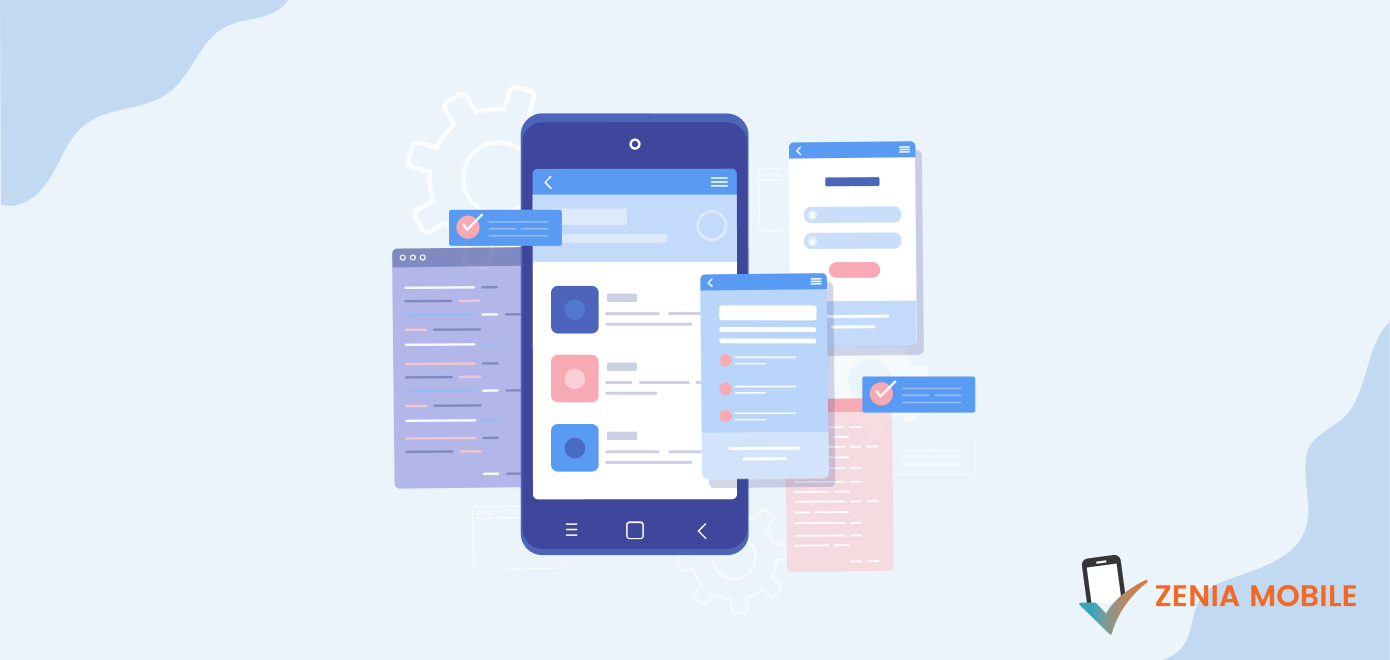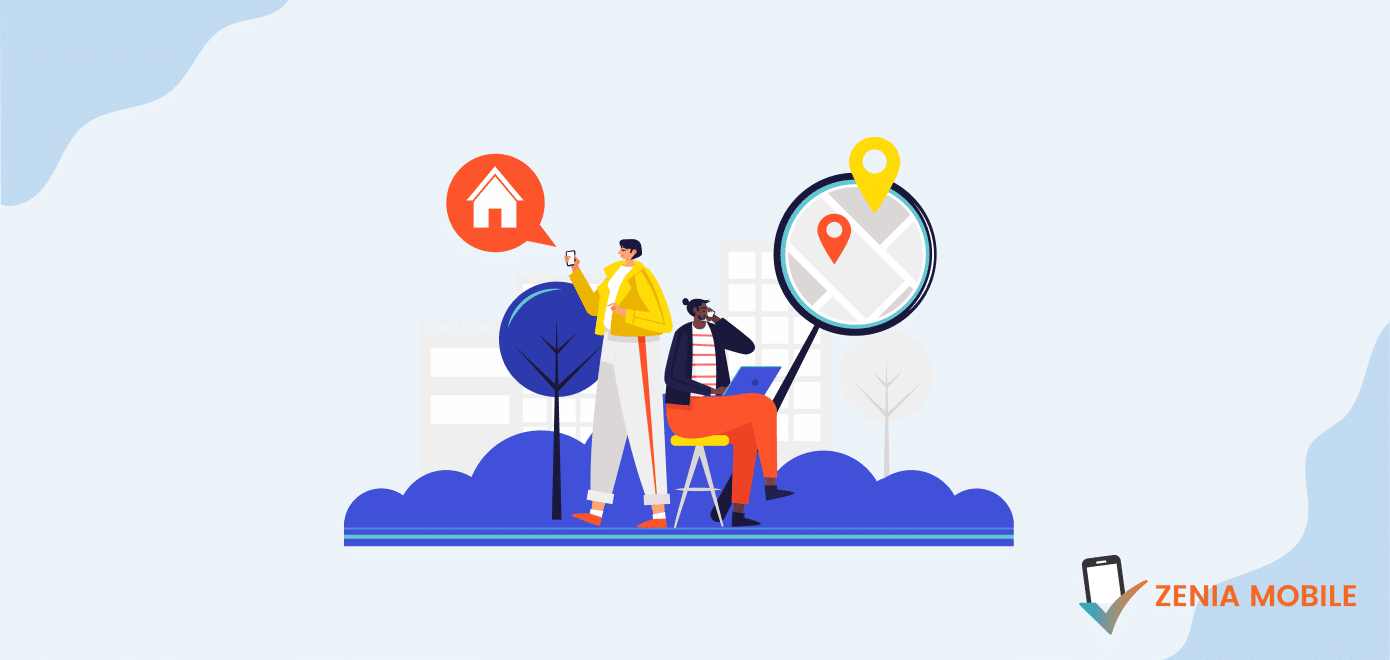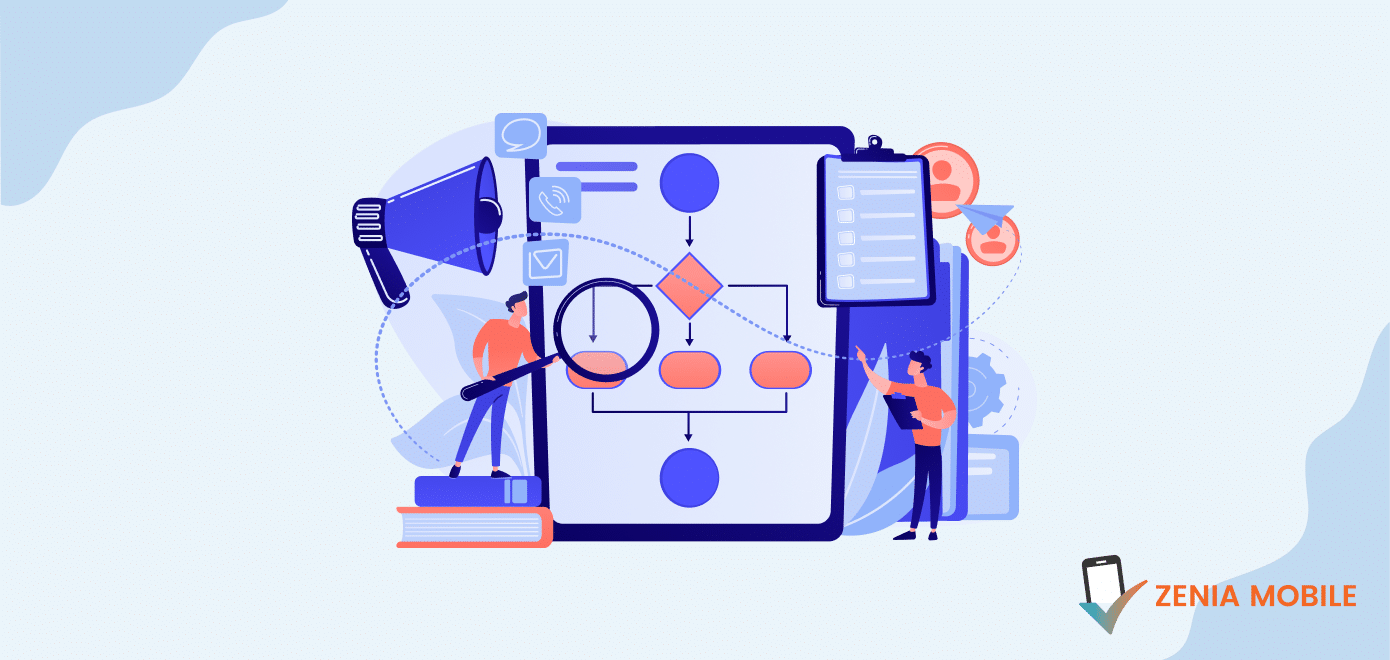Mobile applications have become an essential part of our lives. Whether we need to order food 







Mobile app development is a comprehensive process that comprises several stages. From ideation and planning to deployment and launch, each stage has its significance in delivering a high-quality app to the users. A well-executed app development process ensures that the end product meets the desired user experience and business goals.
a. Ideation and Planning 📝
The ideation and planning stage is the first and foremost step of the app development process. This stage defines the overall strategy of the app, identifies the target audience, and outlines the key features and functionality that the app will offer. During this stage, app development teams brainstorm ideas, analyze market trends and competition, and develop a project roadmap that aligns with business objectives.
b. UI/UX Design 🎨
The UI/UX design stage involves creating the visual and functional aspects of the app. In this stage, designers create wireframes and prototypes to showcase the app’s user interface and user experience. This stage involves several iterations, with feedback from the development team, stakeholders, and end-users, to refine the app’s look and feel and create a seamless user experience.
c. App Development 🛠️
The app development stage involves turning the design into a functional app. Developers use programming languages and frameworks to write code, create databases, and integrate APIs. The development team ensures that the app’s functionality is optimized for different platforms, such as iOS or Android, and follows best practices for security, performance, and scalability.
d. Quality Assurance and Testing 🧪
The quality assurance and testing stage is critical to ensure that the app is free from bugs, errors, and performance issues. The QA team tests the app’s functionality, usability, performance, security, and compatibility with different devices and platforms. The team uses manual and automated testing methods to identify and fix issues before the app’s launch.
e. Deployment and Launch 🚀
The deployment and launch stage involves publishing the app to app stores, such as Apple App Store or Google Play Store. The development team ensures that the app meets the app store’s guidelines and requirements, such as providing a description, screenshots, and metadata. The team also monitors the app’s performance and user feedback to make necessary updates and improvements.
f. Maintenance and Updates 🔧
The maintenance and updates stage involves post-launch support and updates to the app. The development team monitors the app’s performance, user feedback, and technical issues to make necessary updates and fixes. Regular maintenance ensures that the app remains secure, functional, and up-to-date with the latest features and trends.
Mobile app development has become a crucial aspect for businesses and entrepreneurs looking to engage with their customers effectively. However, one of the primary concerns when embarking on a mobile app development project is the cost involved. Understanding the factors that impact mobile app development cost is essential for effective budget planning.

We provide comprehensive solutions including everything from strategizing to deployment at competitive prices.
The complexity of your mobile app is a significant determinant of the overall development cost. Forbes reports Gartner’s finding: Data-driven decision-making is preferred over intuition-based, leading to a 30% compound annual growth in the data analytics market. A simple app with basic features and functionality will naturally be less expensive compared to a complex app with advanced features, intricate designs, and intricate integrations. The complexity of the app affects both the development time required and the level of expertise needed, which directly impacts the cost.
Breakdown of Cost per Complexity:
The choice of platform(s) for your mobile app (iOS, Android, or both) significantly influences the development cost. Developing a single platform is usually less expensive compared to building a cross-platform app that works on both iOS and Android. Each platform requires specific coding and design considerations, resulting in additional time and resources.
The design and user interface of your app plays a vital role in attracting and retaining users. The more intricate and visually appealing the design, the higher the cost. Customized graphics, animations, and interactive elements require additional effort and expertise from the design team, impacting the overall development cost.
The features and functionality you want to incorporate into your app significantly influence the development cost. Complex features such as geolocation, push notifications, social media integration, payment gateways, and third-party API integrations require more development time and expertise, resulting in higher costs.
The backend infrastructure of your mobile app, including server setup, Api development, database management, and web services, impacts the overall cost. Developing a robust and scalable backend requires additional time, expertise, and infrastructure, resulting in higher costs.
Breakdown of Cost per Integration:
Ensuring the functionality, usability, and reliability of your mobile app is crucial for user satisfaction. Comprehensive testing and quality assurance processes are essential, which involve various types of testing like functional testing, compatibility testing, performance testing, and security testing. The cost of testing depends on the complexity of the app and the testing scope.
After the initial development, ongoing maintenance and updates are necessary to keep your app optimized, secure, and compatible with new OS versions. The cost of maintenance and updates depends on the frequency and complexity of updates required.

The location of the app development team can also affect development costs. Development teams based in countries with higher labor costs, such as the US or Western Europe, may charge more than teams based in countries with lower labor costs, such as India or Eastern Europe.
The timeframe for app development can also affect the overall cost. Rushed development schedules may result in higher costs due to the need for additional resources or overtime pay.
The type of app you want to develop plays a significant role in estimating the cost. Different types of apps have different complexities, features, and development requirements. Here are a few common types of apps:

We provide comprehensive solutions including everything from strategizing to deployment at competitive prices.
a. Basic Informational App: This type of app provides basic information about your business, such as contact details, services offered, and company information. These apps are relatively simple and cost-effective to develop.
b. E-commerce App: An e-commerce app allows users to browse and purchase products or services directly from their mobile devices. E-commerce apps typically involve features like product listings, shopping carts, payment gateways, and order tracking. The complexity of such apps can significantly impact the development cost.
c. Social Networking App: Social networking apps involve creating user profiles, connecting with other users, sharing content, messaging, and more. These apps often require complex backend infrastructure and advanced features, which can increase the development cost.
d. On-Demand Service App: On-demand service apps connect users with specific services or resources, such as ride-hailing, food delivery, or home services. These apps require real-time tracking, geolocation, payment integration, and user ratings. The complexity and scalability requirements can impact the development cost.
e. Gaming App: Developing a gaming app involves creating engaging gameplay, graphics, animations, sound effects, and multiplayer functionality. The complexity and design requirements of gaming apps often make them more expensive to develop compared to other app types.
Understanding the specific features and functionalities required for your app type will help you estimate the development cost more accurately.

The features and functionality you want to include in your app will significantly impact the development cost. Each feature adds complexity to the development process and requires additional time and effort. Consider the following aspects when estimating app development cost:
User Authentication: Will your app require user registration, login, and authentication? This involves implementing secure user account management features.
Data Storage and Management: Will your app store user-generated data, such as profiles, preferences, or user-generated content? Consider the backend infrastructure and storage requirements for your app.
Third-Party Integrations: Do you plan to integrate your app with external services or APIs, such as payment gateways, social media platforms, or mapping services? Integrations can add complexity and development time.
Geolocation and Mapping: Will your app need to access user location or provide map-based functionalities? Geolocation features often require integration with mapping services and can impact development cost.
Push Notifications: Will your app send push notifications to users? Implementing push notifications requires backend infrastructure and integration with notification services.
In-App Purchases: If your app includes digital products or services for sale, you need to consider integrating in-app purchase functionality.
User Interface and Design: The complexity and visual appeal of your app’s user interface and design will impact the development cost. Custom designs and animations require more design and development effort compared to standard templates.
The choice of development approach and the resources involved can influence the app development cost. Consider the following aspects:
In-House Development vs. Outsourcing: Will you develop the app in-house or outsource the development to a third-party company? Outsourcing can have cost implications, depending on the rates charged by the development company.
Platform Selection: Will your app be developed for a single platform (e.g., iOS or Android) or multiple platforms (e.g., iOS and Android)? Developing for multiple platforms increases the development effort and cost.
Development Team: The size and expertise of the development team will affect the development cost. More complex apps may require a larger team with specialized skills.
Timeframe: The development timeframe also impacts the cost. Rushing the development process may require additional resources, which can increase the overall cost.
It’s important to note that the app development cost can vary significantly depending on the above factors and individual project requirements. To get a more accurate estimate, it is recommended to consult with our professionals who can assess your specific needs and provide a detailed cost breakdown.
When it comes to app development costs, several factors can add up and increase the total cost beyond the estimated budget. These factors are often referred to as “hidden costs” as they may not be immediately obvious during the planning and development stages. Some of the hidden costs that app development companies may not always disclose upfront include:
Third-party integrations: If your app requires integration with third-party tools or services, such as payment gateways or social media platforms, there may be additional costs associated with licensing or APIs.
Security and compliance: Depending on the nature of your app, you may need to adhere to certain security and compliance standards, such as HIPAA for healthcare apps or GDPR for apps that handle personal data. Implementing these measures may require additional resources and costs.
Scalability: As your app grows in popularity and usage, you may need to scale up your infrastructure and resources to handle increased traffic and user demand. This may include upgrading your servers or using cloud-based services, which can come with additional costs.
Ongoing maintenance and support: After the initial development and launch of your app, you will likely need to continue providing ongoing maintenance and support, which can include bug fixes, updates, and security patches. Depending on the level of support required, these ongoing costs can add up over time.
It is important to consider these hidden costs when planning your app development budget to avoid any surprises down the road. Work closely with your app development team to identify any potential hidden costs and ensure that they are factored into your overall budget.
App development costs can vary widely based on the specific needs and requirements of the project. Each development stage, from ideation to maintenance, comes with its cost breakdown. By understanding the factors that affect app development costs, businesses can make informed decisions and budget appropriately for their app development project.
It is challenging to provide an exact cost for app development as it depends on several factors such as the app's complexity, features, and platform. However, a rough estimate can be provided by breaking down the cost based on each development stage.
The cost of developing a mobile app can vary widely depending on factors such as complexity, features, platform, and location of the development team. However, on average, a simple app can cost between $25,000 to $50,000, while a more complex app can cost upwards of $100,000 or more.
The time it takes to develop a mobile app can also vary depending on factors such as complexity and features. A simple app can take around 2-3 months to develop, while a more complex app can take 6 months or more.
Quality assurance and testing are crucial steps in app development as they ensure that the app is functioning properly, is user-friendly, and is free of bugs and glitches. Skipping these steps can result in a poor user experience, negative reviews, and ultimately lower app downloads and revenue.
Native app development involves building an app specifically for a single platform, such as iOS or Android, using platform-specific programming languages. Hybrid app development involves building an app that can run on multiple platforms using web technologies like HTML, CSS, and JavaScript. Native apps typically provide better performance and user experience, while hybrid apps can be more cost-effective and easier to maintain.
Building an app yourself is possible if you have the necessary skills and experience, but it can be a complex and time-consuming process. Hiring a development team can ensure that the app is developed efficiently and professionally, with access to a range of skills and expertise.

Zenia Mobile is an award-winning VR/AI,Web & Mobile App Development Company with decades of experience in steering clients through digital transformation. We offer deep industry expertise and follow a collaborative approach to deliver high-performance technology solutions.
